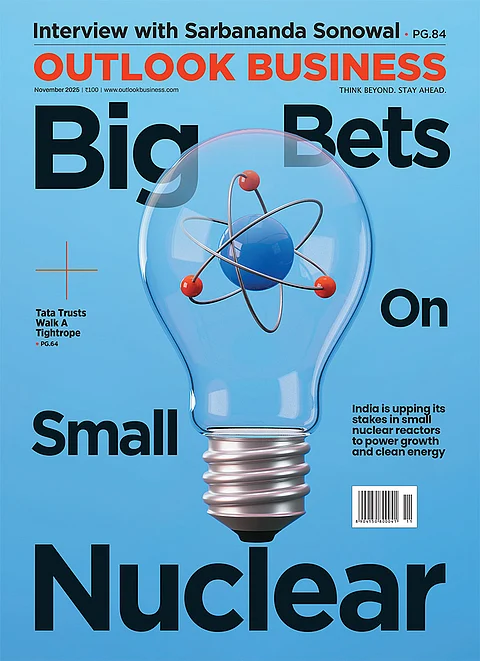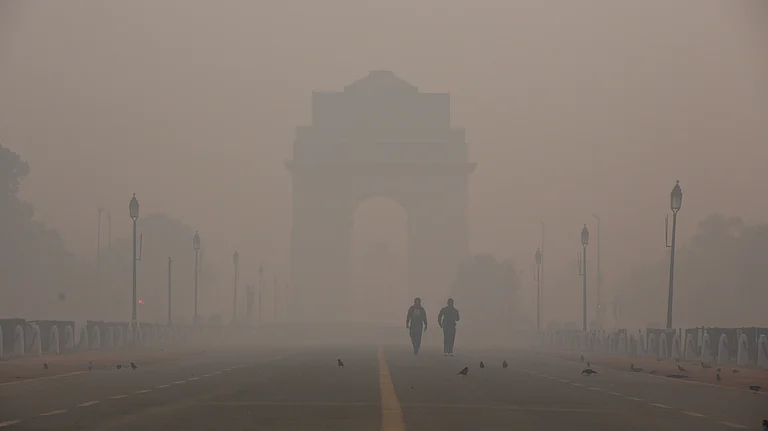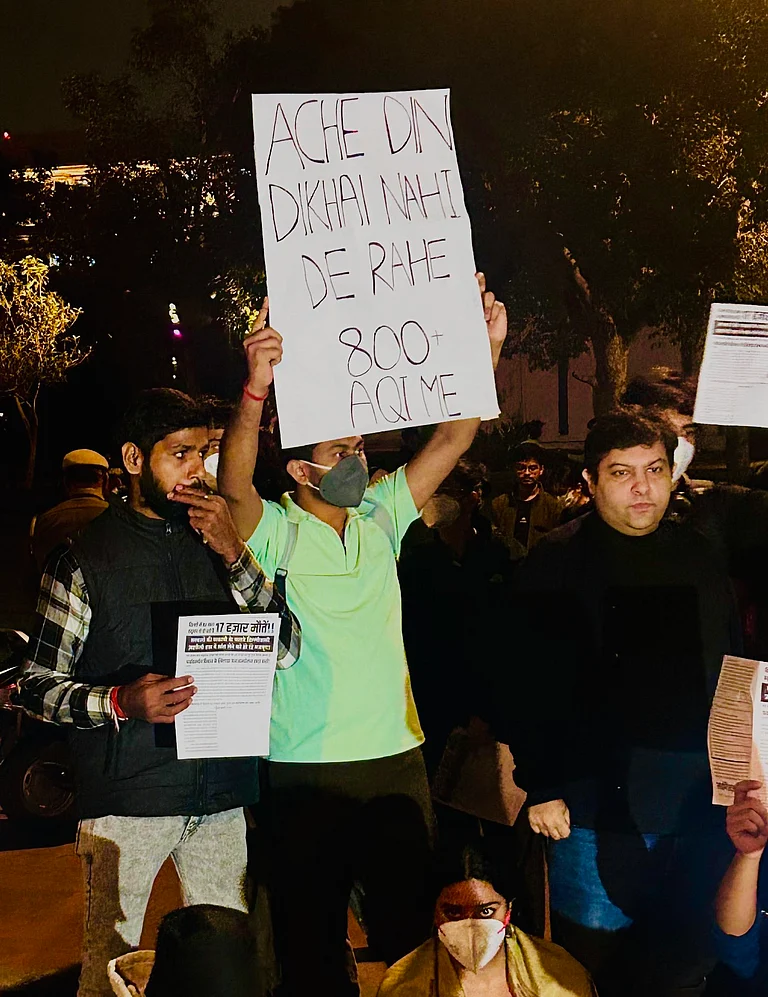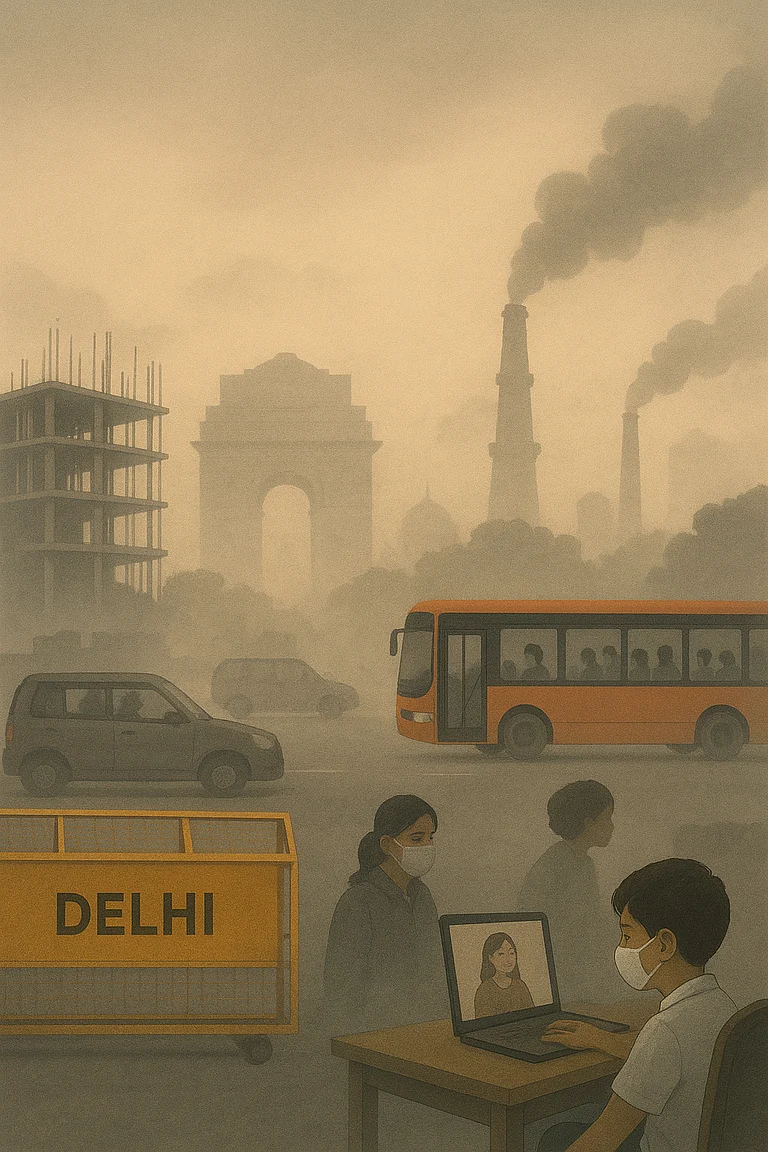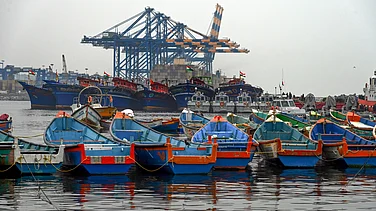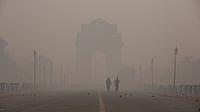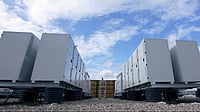
Delhi’s AQI climbs to the ‘severe’ zone again.
Anti-smog guns provide limited relief; experts warn systemic measures are necessary.
Kiran Bedi, Cars24 CEO urge government for coordinated long-term pollution strategy.
Delhi's brief respite from toxic air proved short-lived as the capital's air quality deteriorated back to 'severe' levels on November 28, with an AQI of 383 recorded barely two days after Stage-3 GRAP restrictions were lifted, leaving residents gasping once again.
According to data by the Central Pollution Control Board (CPCB), the Anand Vihar monitoring station recorded an AQI of 405 at 8 am. Nineteen out of 39 stations in Delhi logged readings in the ‘severe’ range, while the majority of the rest hovered close to 400. Only two stations reported readings below 300—in the ‘poor’ category, reported Business Standard. As per the CPCB scale, an AQI of 0-50 is considered 'good', 51-100 'satisfactory', 101-200 'moderate', 201-300 'poor', 301-400 'very poor' and 401-500 'severe'.
Despite a brief period of improvement that led to the relaxation of curbs, the citywide average AQI was 383, staying in the "very poor" category for the thirteenth consecutive day, forcing the citizens to breathe toxic air.
Schools Resume Offline Classes
Meanwhile, the Commission for Air Quality Management (CAQM) revoked Stage-3 status under the city’s Graded Response Action Plan (GRAP) on November 26. With the lifting of Stage-3 restrictions, all schools across the national capital have resumed offline classes. The Directorate of Education also issued a circular revoking hybrid-mode guidelines and directed schools to immediately switch back to physical teaching, raising concerns among some parents.
According to a circular published by the Director of Education, the Delhi government had directed schools to conduct classes in hybrid mode on November 11 for students up to Class 5 as the air quality worsened to the ‘severe’ category. The restrictions were part of a list of actions under Stage 3 of the Graded Response Action Plan (GRAP) that includes a set of short-term emergency measures taken to reduce air pollution.
Anti-Smog Guns Deployed at Construction Sites
According to a recent update shared by the Delhi Metro Rail Corporation (DMRC) on X, the Delhi Metro has deployed 82 anti-smog guns to control dust at its project sites, mandating their use in all civil construction contracts. DMRC claimed it was among the first major agencies in the region to adopt this dust-suppression technology.
The Delhi government had mandated anti-smog guns for large commercial buildings with more than five floors or over 3,000 sq. metres built-up area. These will be required throughout the year, barring the monsoon period.
According to a November 4 TOI report, Delhi government had instructed civic and infra agencies to install and operate 107 anti-smog guns across the city by November 29. They were expected to be placed on buildings that have six storeys (G+5) or more.
According to reports, on November 22, the Municipal Corporation of Delhi issued 28 challans and imposed a fine of ₹3.8 lakh for alleged repeated violations of dust-control and pollution mitigation rules at several construction sites on Mehrauli–Badarpur Road. But DMRC said only a small section is under its control and environmental rules are being followed in these areas. It said 24 out of the 28 challans were issued in accordance with the National Green Tribunal’s guidelines and the others for violating the Solid Waste Management Rules, 2016.
In addition, the South Zone alone issued 17 challans worth ₹1.8 lakh during an inspection of MB Road, with fines ranging from ₹5,000 to ₹50,000. Under NGT directions, no agency or contractor can store construction material on metalled roads, spill debris beyond work sites, or leave waste uncovered. Dumping that blocks drains or exposes material without proper shielding is also prohibited, an MCD official told Business Standard.
Only a Supporting System
The Council on Energy, Environment and Water (CEEW) recently highlighted the limited impact that anti-smog guns (ASGs) can have. In a report this month, it pointed out that such equipment placed on high-rise buildings in Delhi can help reduce localized dust, but their coverage is too limited, costs are high, water use is unsustainable, and they should complement—not replace—systemic dust-control measures across the city.
The report further warned that of about 58,505 buildings in New Delhi, only 452 qualify as “high-rise” according to the mandate—and just 84 meet the ≥ 3,000 sq m built-up-area criterion for installing anti-smog guns. Concerns regarding cost, coverage, and water use were raised by the CEEW report, which also emphasised that the deployment would require about 250–600 anti-smog guns citywide, consuming an estimated 25–90 lakh litres of water daily if fully implemented.
Citizens, Celebrities Demand Action
Former IPS officer Kiran Bedi has publicly expressed her dissatisfaction over the government’s reactive approach towards mitigating air pollution in Delhi.
Kiran Bedi’s timeline has turned into a constant reminder of Delhi’s choking air. The former Lieutenant Governor of Puducherry has been sharing multiple posts tagged “feedback post”, urging authorities to take immediate action.
Underscoring the reasons behind India’s pollution crisis, she wrote in her post on X on November 28 that governments’ dependency on quick, temporary fixes like smog towers and odd-even rules instead of addressing deep-seated root causes would not yield long-term results. She also stated that fragmented governance with multiple agencies sharing responsibility but none holding full authority deters agreement on a coordinated, long-term action.
In addition, she also stated that major emission sources—vehicles, industry, construction dust, and crop burning—remain poorly regulated because enforcement is weak and agencies lack resources. Short-term political incentives also overshadow structural reforms, which demand time, money, and political risk. She further argued that real progress requires systemic change, including a unified air-quality authority, stronger monitoring, long-term investments in clean energy and public transport, and far better inter-state coordination.
Cars24 Founder and CEO Vikram Chopra has also written a letter to Prime Minister Narendra Modi, urging him to take urgent action to address Delhi’s persistent air pollution crisis.
Chopra called for a coordinated action among Delhi, Punjab, Haryana and Uttar Pradesh to implement policies promoting electric vehicles, manage stubble burning, and control industrial emissions.
“Modi ji, clean air is not a luxury. It is a prerequisite for growth, a prerequisite for global competitiveness and a prerequisite for human dignity. If a child cannot breathe freely or an elderly person cannot step outdoors without risk, every other ambition we have as a country becomes secondary,” Chopra wrote.
Echoing a similar sentiment, author and entrepreneur Suhel Seth criticised the government turning a blind eye to the crisis and wrote in a post on X, “The truth is no one gives a monkey’s toss about pollution. From the Chief Justice to the Chief Minister. It’s strange. They can see but they don’t want to act. What a dystopian world we live in.”
Forecast Till December 7
The AQEWS for Delhi has predicted that pollution levels will remain in the ‘very poor’ range from November 28 until December 7.
Meanwhile, the India Meteorological Department (IMD) predicted cloudy skies with fog in parts of the city today. The minimum temperature is likely to hover between 8 degrees Celsius and 10 degrees Celsius and the maximum temperature could stay between 23 and 26 degrees Celsius.







